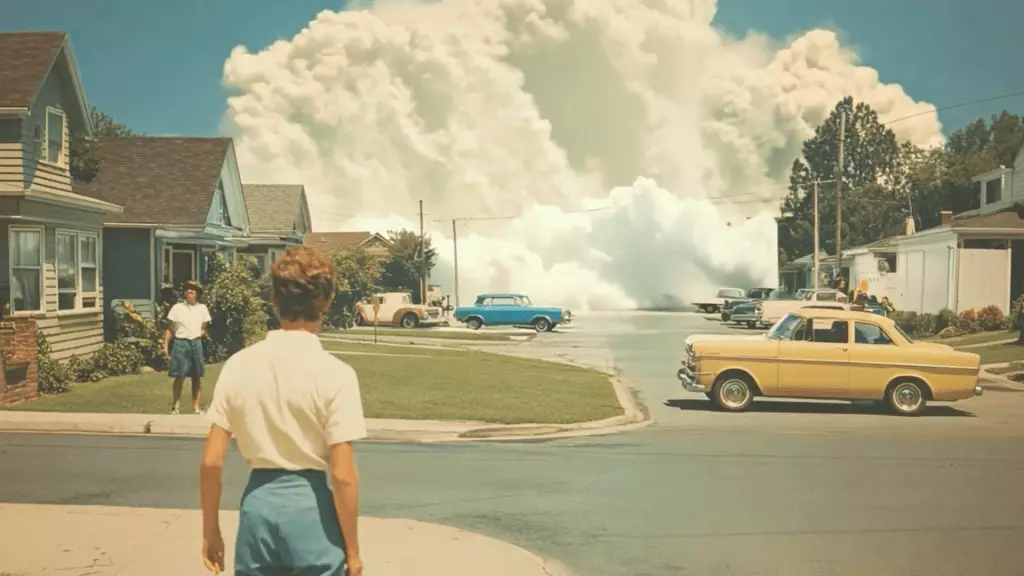In an era where technology is transforming every corner of life, the recent triumph of Jacob Adler’s film, Total Pixel Space, at the third annual AI Film Festival is a resounding indicator that the cinematic landscape is evolving—rapidly and irrevocably. Hosted at the esteemed Alice Tully Hall in Lincoln Center, this event epitomizes the intersection of art and artificial intelligence, creating a platform not just for films, but for a message. With the festival growing from a mere 300 submissions to an astonishing 6,000, it raises critical questions about what art truly means in the age of algorithms. Is this excitement genuinely groundbreaking, or is it a harbinger of a future where the very essence of creative expression is dictated by code?
The Illusion of Creativity
Cristóbal Valenzuela, CEO of the AI company Runway, expressed that we are witnessing “the most important technological shift any of us has seen in our lifetimes.” While such statements brim with optimism, they also carry an undercurrent of concern. One cannot ignore that as AI begins to infiltrate the arts, the question of authenticity looms large. Can art birthed from machine learning and artificial intelligence possess the same emotional depth and authenticity as that created by human hands? When creators like Steven Ellison, known to the world as Flying Lotus, advocate for an unstructured, instinctual approach to filmmaking enabled by AI, we must ask: does this lead us towards a renaissance of creativity or a dilution of artistic purity?
Flying Lotus’s adherence to a “f**k around and find out” philosophy brings a level of spontaneity to the filmmaking process. Yet, therein lies a deep dichotomy; spontaneity does not necessarily equate to creativity. It’s one thing to play with ideas in a timeless space of imagination, but quite another to surrender the reins of originality to a neural network that learns from existing art. Will this foster a more diversified artistic landscape or will it lead to an echo chamber of recycled inspiration?
Reality Versus Surrealism
The 10 finalists showcased at the festival varied dramatically, reminiscent of the surreal experiences individuals undergo in their dreams, which raises the question of what substantive narratives are available when the tools favor visual novelty over storytelling depth. Films like Jailbird by Andrew Salter claim a documentary perspective that is critical, showcasing the transformative power of placing chickens with prisoners—a poignant story made even more compelling through the lens of AI’s subtle interventions. This melding of human experiences with AI-enhanced storytelling exhibits the potential for technology to enrich narratives, rather than replace them.
However, as we delve deeper into these surrealistic portrayals, we must remain vigilant against becoming entranced by the novelty of technical prowess at the expense of meaningful dialogue. AI may generate extraordinary visuals, but can it genuinely capture the human experience? In the allure of pixel-perfect renderings, will we lose the fundamental components of storytelling that engage audiences at an emotional level?
The Dangers of Complacency
The rapid expansion of AI in the creative industries also sends up warning flares. It risks commodifying art and could lead us to a future dominated by homogenized content. Valenzuela’s excitement about the “significant moment” in culture should not allow us to overlook an inevitable consequence: the prospect of mediocrity powered by algorithmic predictability. What happens when the machine learns not just from the greats, but also from the derivatives, creating a cycle of sameness and erasing distinct artistic voices?
The AI Film Festival represents a thrilling moment on the cusp of innovation, but it also serves as a battleground of ideals. The evolution of filmmaking through AI cannot be viewed as an unavoidable tide but as a conversation that demands our passionate engagement. It raises ethical considerations and invokes introspection about what we envision for the future of artistry. Are we on the brink of democratizing creator access through technology, or are we veering towards a dystopian future where original thought pauses in the shadows of computational brilliance?
As we embrace this new chapter in film, let us tread carefully. Technology is a powerful tool, but it remains our responsibility—an artistic obligation—to determine how we wield that power in pursuit of genuine creativity and storytelling integrity. The onus falls upon us, the audience and creators alike, to ensure that as we innovate, we do not forget the very reasons we tell stories: to connect, to provoke thought, and to touch the human soul.


Leave a Reply